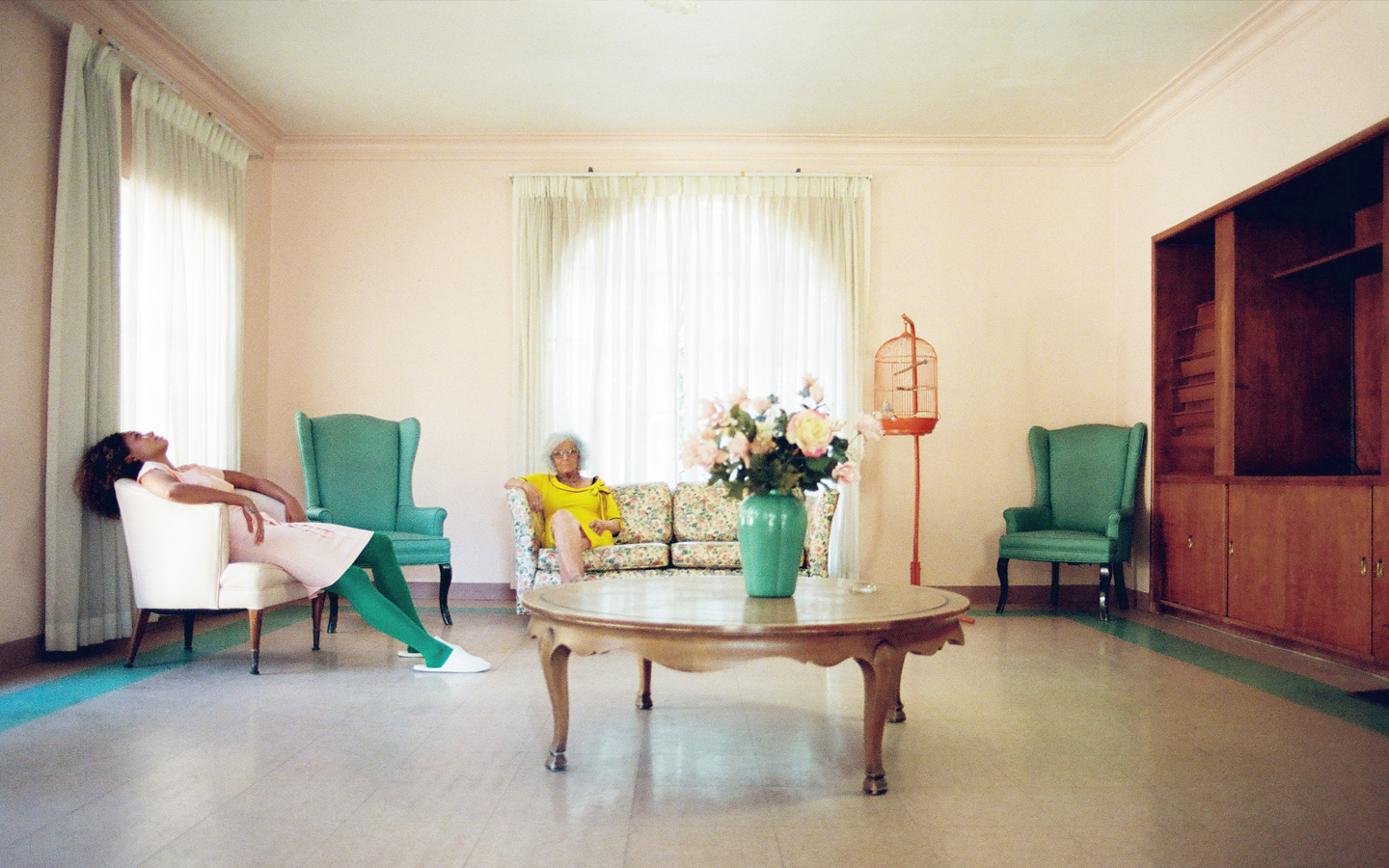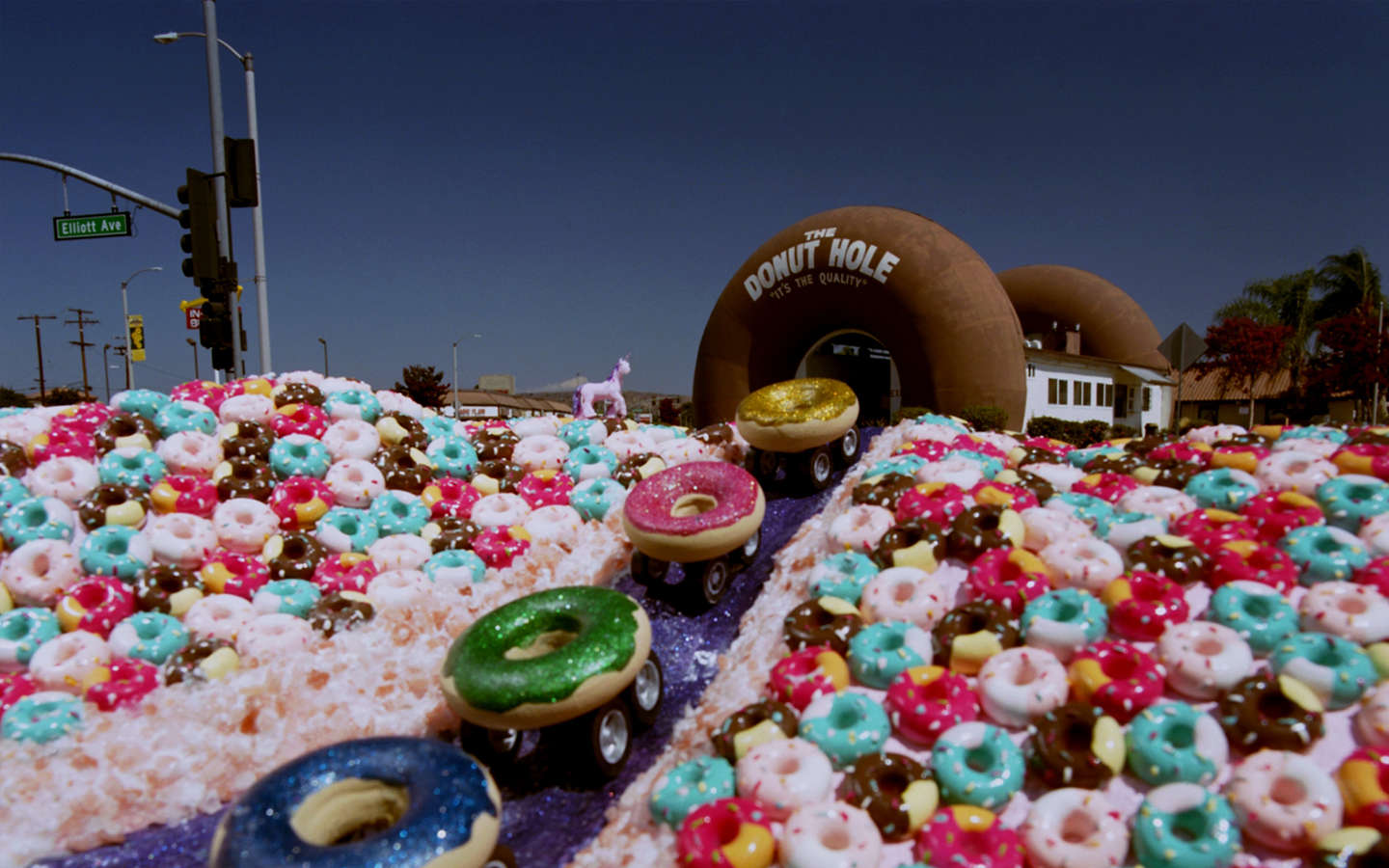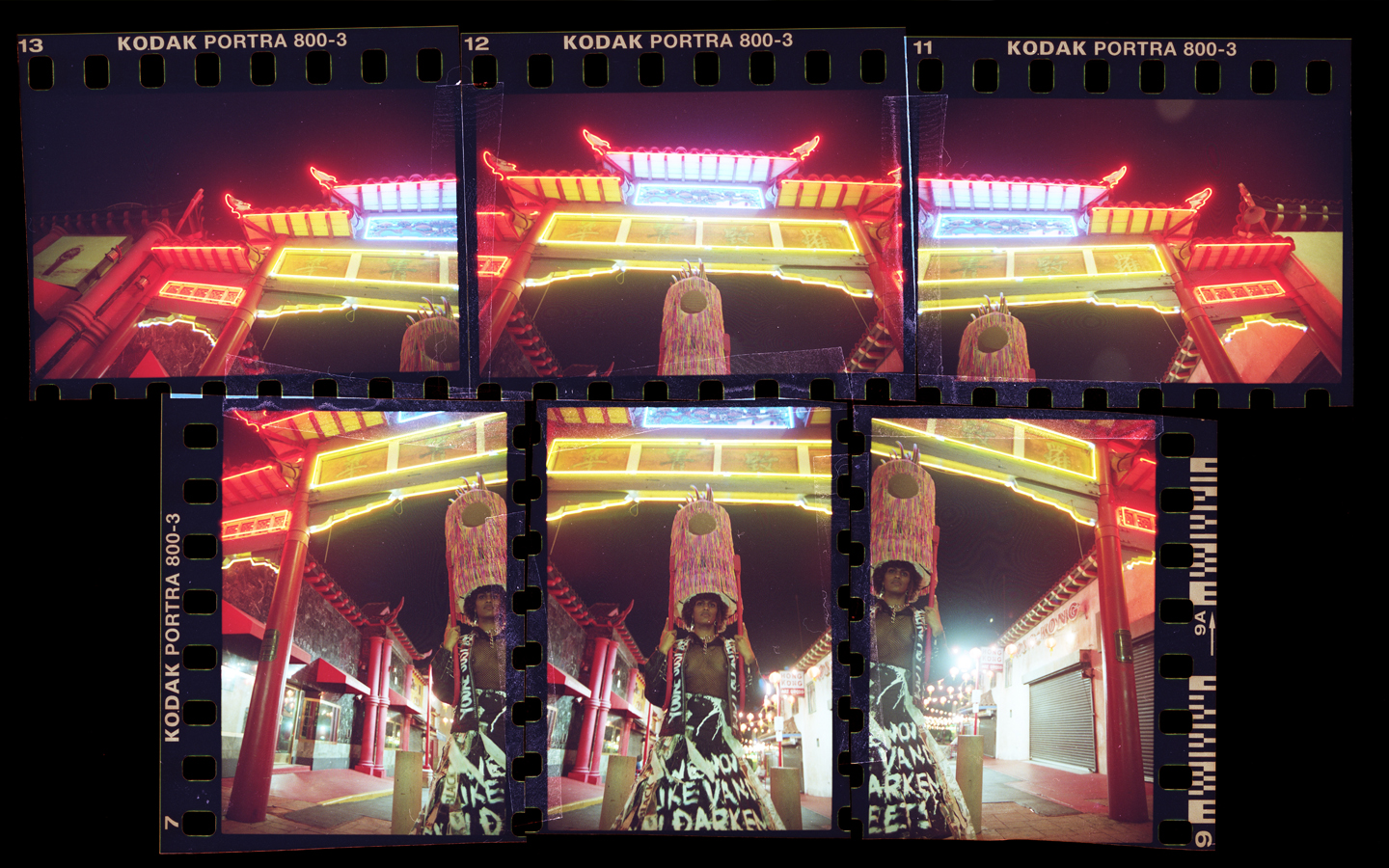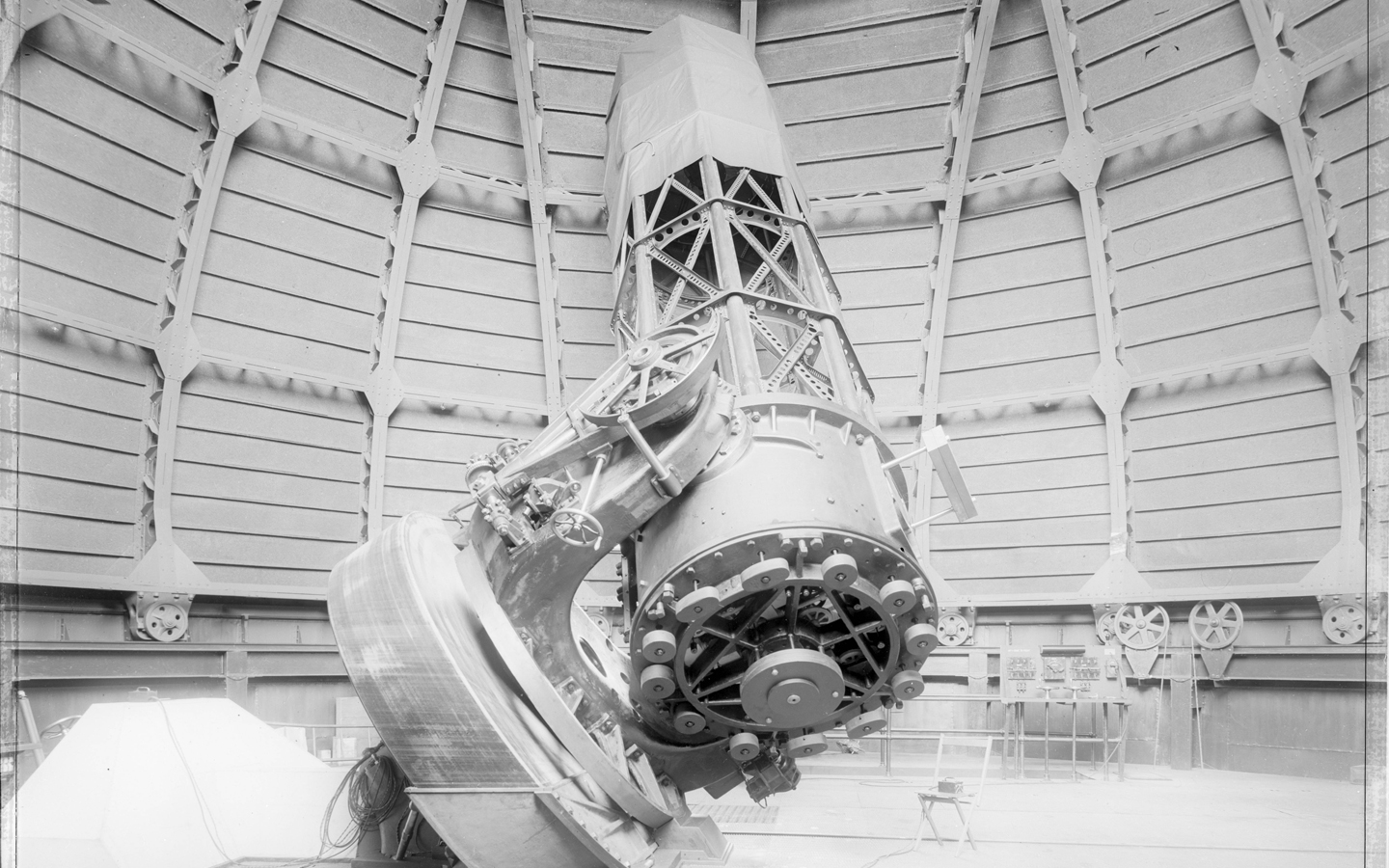
Rockhaven Sanitarium
TEXT LAWRENCE LANOFF
VISUAL NEDDA AFSARI
MEMORIES ARE LIKE GHOSTS AND GHOSTS ARE MEMORIES TRACING THE RIDGES AND EDGES OF OUR MIND’S ABILITY TO OPEN WIDE
A woman, dancing haunted, haunting steps, washes decades-dirty floors with attention and care. Saturated colors, red, green, blue, bleed through peeling whitewashed layers of decay and denial and decay again.
TIME IS HARSH BUT NOT AS HARSH AS DECAY
Shards of sunlight slash worn, trodden floors. Soundless cries still echo in empty halls, palpably silent. Color furniture contrasts time-bleached, outlived walls of contamination and crazy. They have all seen things. As have the spirits. Some good. Some better. Some not.
The dancing woman, listening for guests unseen, wistfully serves the decaying grounds and spirits of Rockhaven Sanitarium in Glendale, California.
A small force of volunteers tend to the sanctity, the sanity, of the shuttered and aging sanitarium.
TIME IS A CIRCLE
Created by Agnes Mary Richards in 1932, Rockhaven Sanitarium was the first of its kind—intended to support the female “insane” and mentally afflicted in a cloistered, homelike environment. With private rooms and private routines, Agnes’ early vision of healthcare for women was a forerunner to a more modern, thoughtful, idea of mental health. Nuanced.
TIME IS BOUNDLESS
To Agnes, the atrocities inflicted upon women in standard medical environments of her time, such as Cooke County Medical Center in Chicago, Illinois, were painfully obvious. Unsupervised visits. Quixotic diagnoses. Degradation and humiliation of female mind and body.
TIME IS MERCILESS
Agnes spent her early years training in some of these most firmly established hospitals, run and dominated by men. They offered little mercy to women—often throwing them to the wolves waging war on the “epidemic of hysteria.” Agnes was depressed by the harsh treatment of women that she witnessed in these facilities. (Only the slightest step up from the burning of witches as a cure for the earthly, evil, darkness that takes over the minds and bodies of these wretched and afflicted women on a monthly basis. This is a science, after all.)
TIME IS CRUEL
Agnes felt she could do a much better job than the disembodied men she had regularly worked with, in the caring of women’s wombs, minds, and bodies. In 1923, Agnes rented the Rock House in Glendale, California for her first patients.
TIME IS ALIVE
Rockhaven Sanitarium was founded in the city with the “finest air” in California. It had secluded grounds, was run by women, and had a full-time, female-only, caregiving staff. Here, “mentally unstable” women were sheltered, treated, and on occasion, healed. Rockhaven Sanitarium took on the women with stigmatized “mental diagnoses” of the era.
Starting with only six patients, the sanitarium grew to as many as 104 women at its peak. This wasn’t all that hard because of the incredible ease and obvious simplicity of a mental diagnosis for women’s maladies. At the time, this included ailments such as bad habits and political excitement, suppressed masturbation, and overactivity of the mind. Oh yes, and too much reading. As in so many ideas about life, being human is itself the malady. And being a woman was a malady worthy of electroshock therapy.
TIME IS CONFOUNDING
Modern social sciences have taught us that we become what people expect us to be, guided by the subtle ways in which they treat us. Agnes believed differently about the women she tended to and treated. She cared for her patients as real people, referring to them as “ladies” or “guests.”
Each of her women had a routine. Hair appointments, manicures and pedicures, daily chores and jobs. If you were to drop in unexpectedly on one of the Rockhaven ladies, you might think she was going to a show. No woman was left to be a useless, helpless diagnosis. Instead, each was purposed, each had her own dignity. Each was seen as a human with a history—her story—even if she herself no longer remembered that history in her disorganized mind. Agnes created a safe place for her guests to stay until the end.
And the history of her story was shaped into routine and meaning, tending to the gardens of her life. The Sanitarium was a cutting-edge treatment for the time.
TIME IS RELENTLESS
Wandering the grounds, I find an image on a shelf. It is the obfuscated memory of far away thoughts, faded, like the black and white image of her, a Rockhaven lady, fully dressed up, but clearly frozen in the time of being lost in the lonely depths of her mind. The photo crumbles in my fingers. Sanity is fragile, as are the buildings, images, and books, long fallen into disuse. A suitcase, half packed. A calendar on the wall reading “Today is Thursday, August 17th, 2005,” which of course, it is not. This is, paradoxically, crazy-making for the sane, but perhaps reassuring for the caretakers, marking time until this landmark becomes either rubble or a boutique hotel.
TIME IS FRUITLESS
Perhaps the calendar on the wall is merely a touchstone for ghosts, living in neither space nor time, but somehow confused by the unreality of the reality that the day of today has passed—for the dead—long ago. And for those dead, there is no tomorrow. Freedom is what is lost when you give up the right to your sanity.
What becomes of this place, we shall see. The stories of Marilyn Monroe’s mother “jumping” out of a window—a first-floor window—and escaping onto the streets of Glendale, then being dragged back, unwillingly, to Rockhaven, will surely draw people with a morbid curiosity of what lies beyond the walls of the minds and the now silent sanitarium. Perhaps a trendy hotel crafted to allow us to dream of the worst. Downward social comparisons of ourselves to the dead. Strangely comforting.
Sometimes, at least for a while, the ideas of what is possible were, for Agnes, stronger than the buildings. But the ideas fade as the people energizing them disappear. And just the buildings remain, until they too fall into disuse and disrepair, clung onto by ardent supporters, gardeners, and government officials, overworked and with too little time to tend to the unattended. Until time wears them down and commerce presses ahead of personal history lost to years past.
TIME MOVES TOWARDS THE END
Home is where the heart is. And that was the idea that drove the core of Rockhaven Sanitarium. It was a beautiful environment, personalized for its residents. However, what becomes of the ghosts and echoes of Rockhaven remains to be seen. Buildings will be built and torn down like the ideas behind them, in an endless dance of the false reality of permanence.
Rockhaven wanted to stimulate and protect the minds of residents. To focus their inner vision into the present and keep them from staring too deeply into the shadows of the passing past.
Yet the past has now caught up to the present, and they collide, like a car crash, as people gather, slowly, to see what becomes of the residents’ decaying residences.
TIME IS




